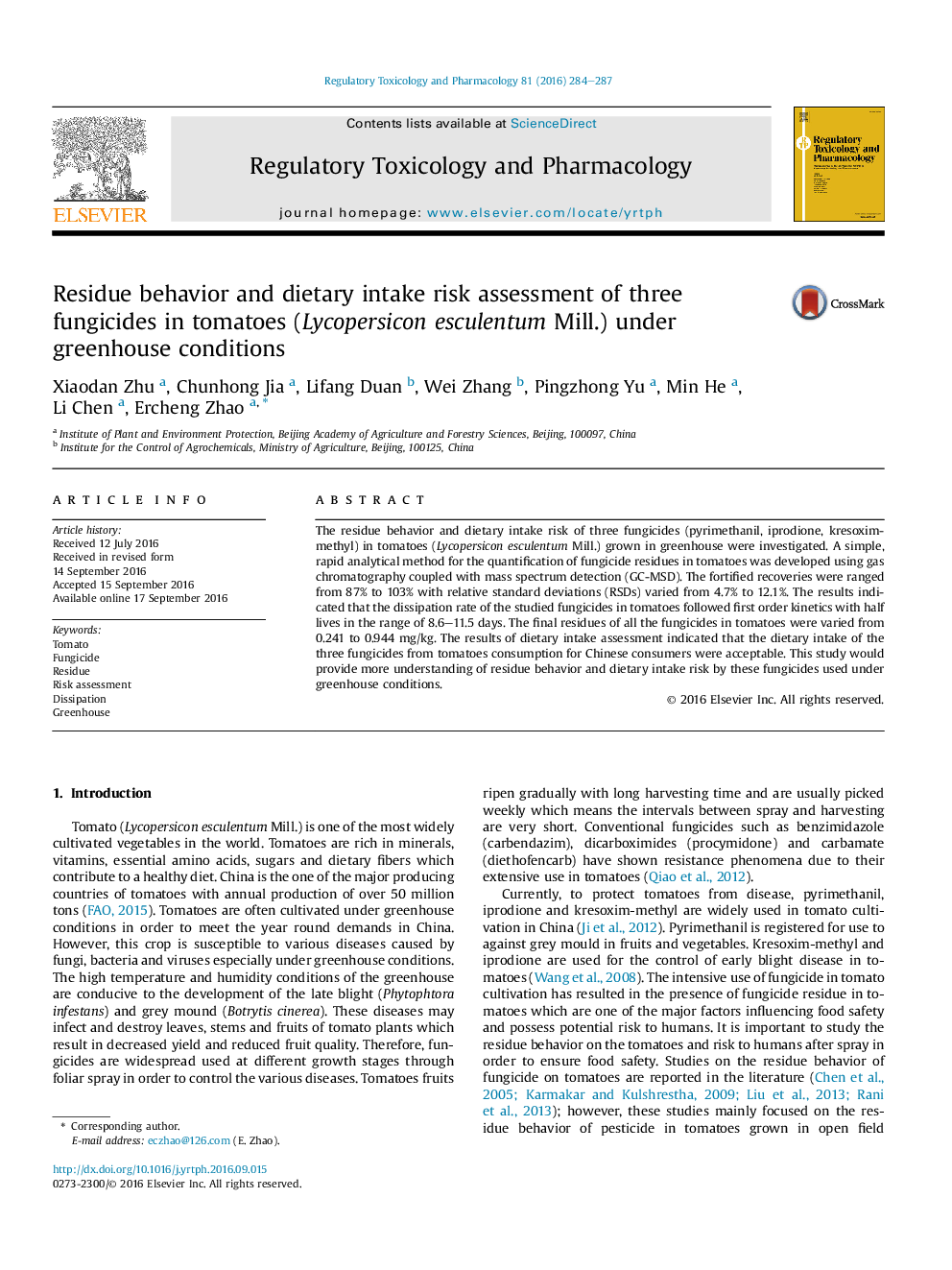| Article ID | Journal | Published Year | Pages | File Type |
|---|---|---|---|---|
| 5855753 | Regulatory Toxicology and Pharmacology | 2016 | 4 Pages |
Abstract
The residue behavior and dietary intake risk of three fungicides (pyrimethanil, iprodione, kresoxim-methyl) in tomatoes (Lycopersicon esculentum Mill.) grown in greenhouse were investigated. A simple, rapid analytical method for the quantification of fungicide residues in tomatoes was developed using gas chromatography coupled with mass spectrum detection (GC-MSD). The fortified recoveries were ranged from 87% to 103% with relative standard deviations (RSDs) varied from 4.7% to 12.1%. The results indicated that the dissipation rate of the studied fungicides in tomatoes followed first order kinetics with half lives in the range of 8.6-11.5 days. The final residues of all the fungicides in tomatoes were varied from 0.241 to 0.944Â mg/kg. The results of dietary intake assessment indicated that the dietary intake of the three fungicides from tomatoes consumption for Chinese consumers were acceptable. This study would provide more understanding of residue behavior and dietary intake risk by these fungicides used under greenhouse conditions.
Related Topics
Life Sciences
Environmental Science
Health, Toxicology and Mutagenesis
Authors
Xiaodan Zhu, Chunhong Jia, Lifang Duan, Wei Zhang, Pingzhong Yu, Min He, Li Chen, Ercheng Zhao,
